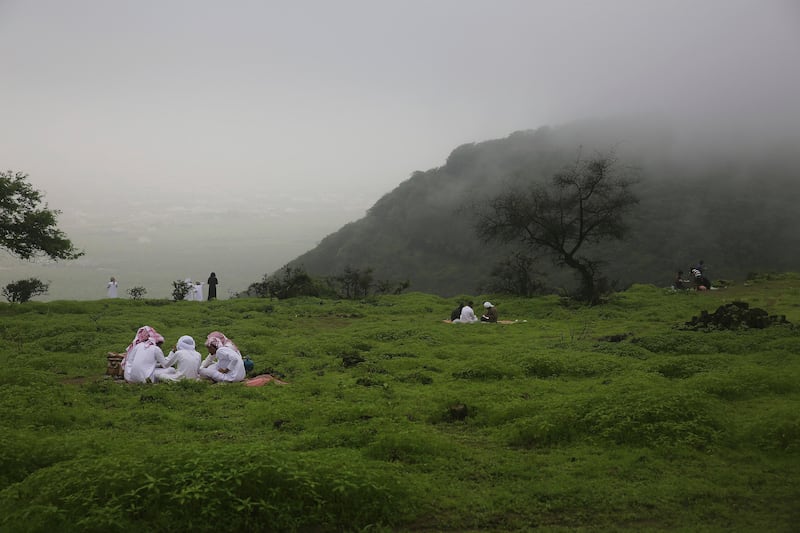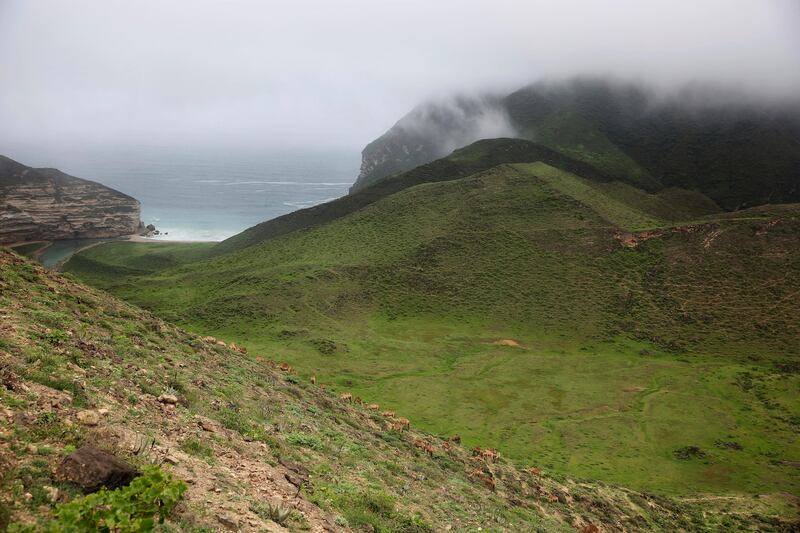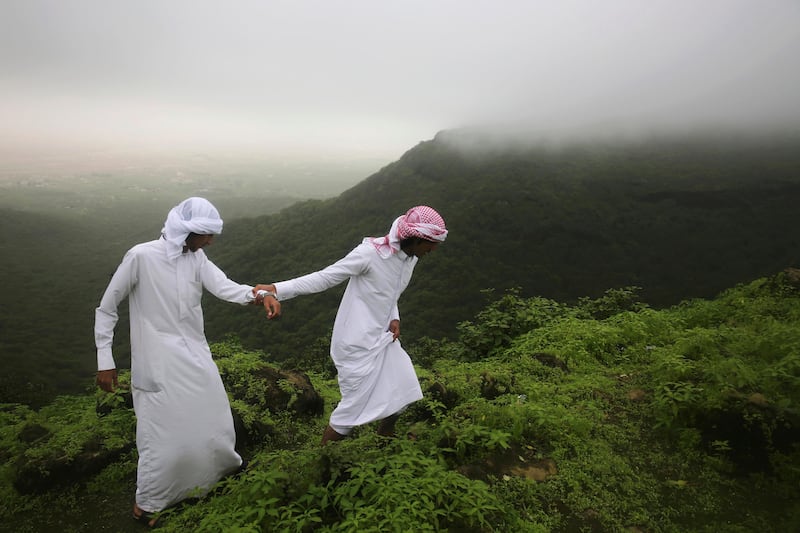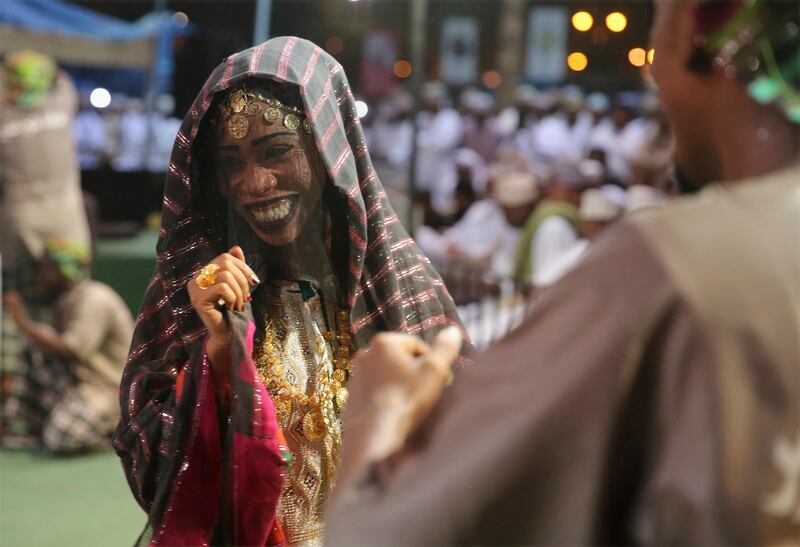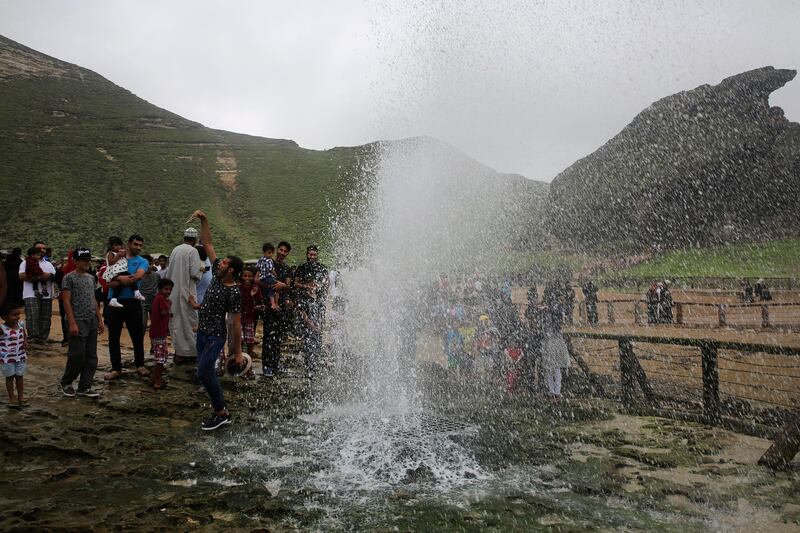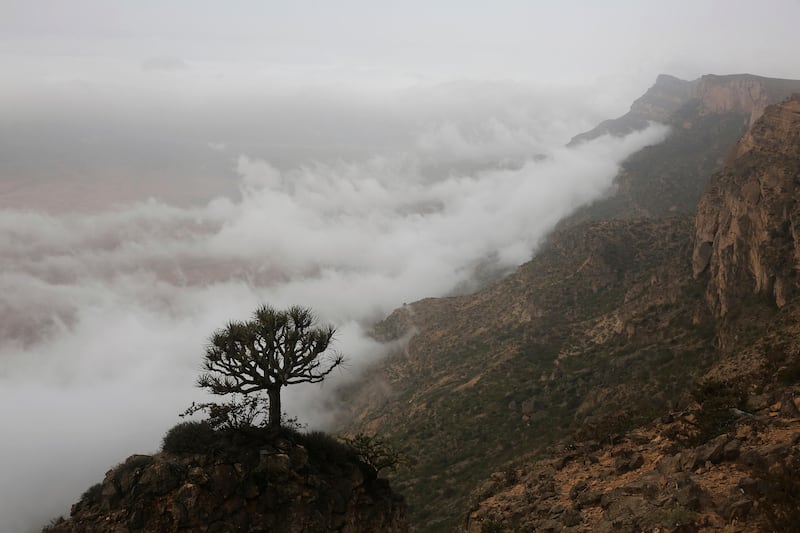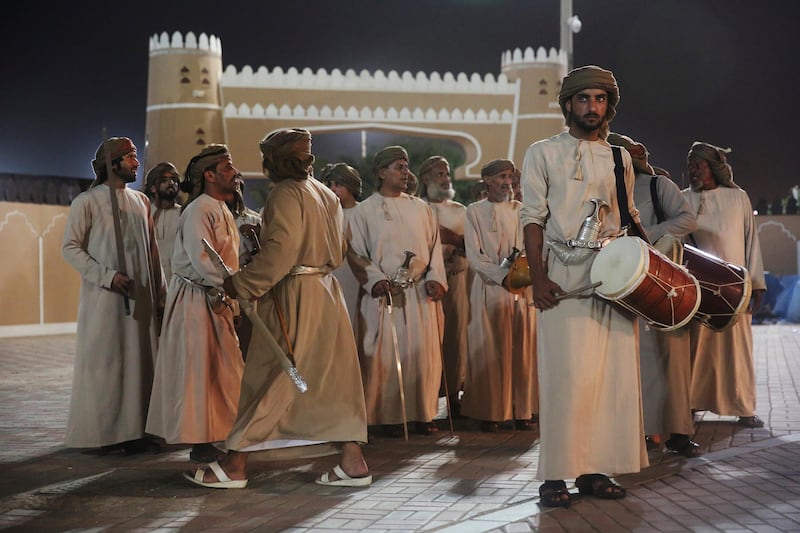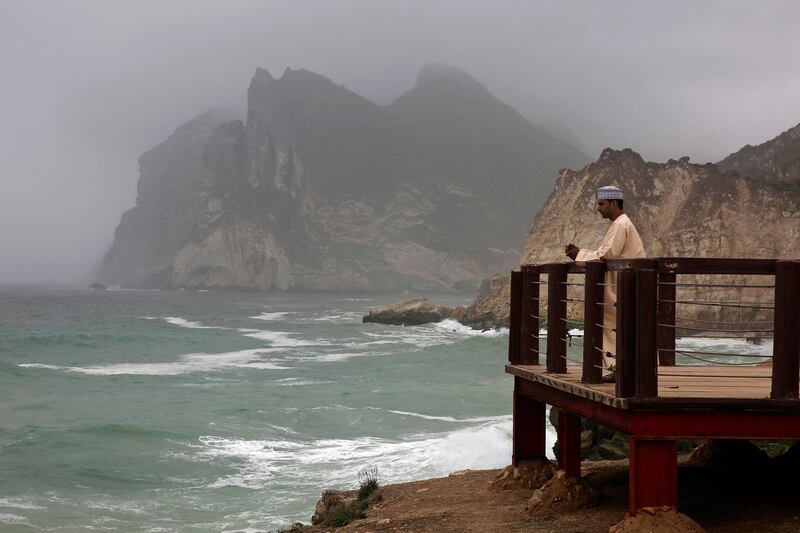On the eastern edge of the Arabian peninsula, a region disappears under sky-wide blankets of fog as the desert blooms green.
This is the Omani monsoon: a phenomenon that draws hundreds of thousands from the GCC with cooler weather and stunning vistas for about three months of the year.
A 60-day festival attracts about 50,000 people nightly for dagger-dance competitions and musical performances in celebration of Oman's cultural diversity roots intertwined by the summer rain clouds.
So far this year there are twice as many tourists than last year when more than 650,000 visited the fog-drenched mountains and verdant valleys of the Dhofar region, according to the Omani statistics agency.
Salalah, on the south coast, swells with visitors from across the region.
________________
Read more:
Beat by the heat: Horror stories of summer in the Emirates
Extreme weather in the UAE: Tales of sun, sand and even snow
Watch: Incredible footage of ‘twister’ in UAE
________________
The monsoon has long attracted seasonal visitors. Ruins show trade between coastal and mountain communities developed over 5,000 years, tying Asia, Europe and Africa together, according to Alexia Pavan, an archaeologist who heads the restoration of an ancient fort designated a Unesco World Heritage Site called Al Baleed.
"It worked like a bridge between cultures," Ms Pavan said. "Goods, people, ideas, skills, all of them passed through Oman and spread to different continents."
The Festival
The government of Dhofar established the monsoon festival in 1998. Twenty years later, the festival draws acts from 40 countries, said festival director Talal Al Masahli.
He said 60 per cent of visitors come from within Oman, the rest from GCC countries and a few more further afield.
Sprawling festival grounds include faux fort walls, turrets and ornate gates with three stages, life-size models of traditional Omani homes and vendors selling grilled meat, fruit and frankincense.
Each night, a different Omani city takes control of the main stage to show off songs, handicrafts, dances, clothes and games.
The port of Sohar staged a giant maritime-themed show with canons and an enormous replica of a dhow; the next night a group from Bidbid chanted with swords as a trumpeter blew a ram's horn and kids played old games with rocks, cards, rope, sand and balls.
At a Dhofari dance competition called Al bara'a, two men jump, spin and wave small daggers. Votes via SMS from audiences watching on Oman TV determine who gets the winning gold daggers.
________________
Read more:
How Trygve Harris followed her nose and left New York to distil frankincense oil in Oman
________________
Salem Ashoor, leader of the local Ahmad Al Kabir Sufi order, said diverse groups use the festival to share, and thus preserve, their culture far and wide.
The Sufi order performed musical exorcisms, with 12 dancers beating drums and singing as a man inhaled frankincense and took off his shirt, eyes ablaze with possession by a "jinn", or spirit.
The 500-person audience, gender-segregated with women in black robes and men in white, watched in silence. The man poked his stomach with a small knife, bared his teeth and drew a saber across his throat as the Sufis chanted prayers to cleanse the spirit.
When the jinn left, the man sank, exhausted, as others laid comforting hands on him.
The region
The mountains ringing Salalah trap moisture from the Indian Ocean monsoon, said chief regional meteorologist Khalid Al Najar, pointing out a satellite photo of a small rain-grey patch on an otherwise scorched-brown Arabian peninsula. Air pressure pockets above Saudi Arabia and Tibet drive air currents to Oman as the temperature difference between scorching sands in the Arabian peninsula and cooler waters churned up by Indian Ocean winds produce rain-heavy clouds.
Despite heavy fog, thousands of people visit the lush mountains and coasts. Along the road, stalls sell coconuts, papaya and bananas. Nearer the mountains, vendors roast camel fat and meat on hot rocks. Islamic calls to prayer ring out from a golden seaside mosque in a foggy palm grove.
Atop Iteen mountain, hundreds visit the shine of the Prophet Job, or Nebi Ayoub in Arabic: a green coffin covered in gold moons and stars in a tomb above a spring where legend says Job was miraculously healed.
________________
Read more:
Meaty street food mashakik a recipe for success among Oman foodies
________________
On a fog-shrouded plateau, picnickers sing and snap selfies below emerald mountains. Above the monsoon, a few peaks are visible with crystal-clear vistas of white clouds, blue sky and golden sun. At the coast, a faint rain falls incessantly. Vendors sell umbrella hats and plastic ponchos alongside mango and grilled meat to crowds hiking the stone cliffs of Al Maghsayl, where waves have bored tunnels through seaside rocks. The blow-holes roar, then burst jets of water, wetting giddy visitors.
The government is investing in Salalah's potential as a year-round destination, with a US$780 million (Dh2.9 billion) airport, new roads and a coastal land grant to the new five-star Anantara resort. The resort hosts Arab tourists seeking moderate summer temperatures and Europeans in winter.
"It's magical," said Muna Al Ajmi, an Omani chemical engineer visiting with two children.
"Compared to Dubai this is just fantastic because you can be outdoors all the time," said Thomas Wagmann, an Anatara guest on holiday from Dubai. "You don't even have to worry about sunburn because there's no sun."
